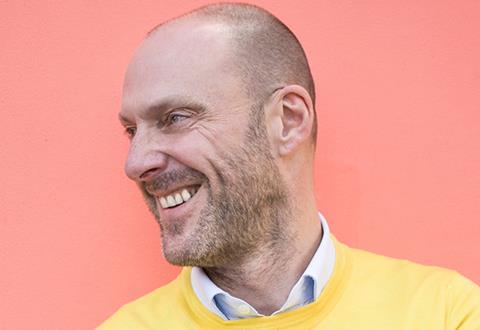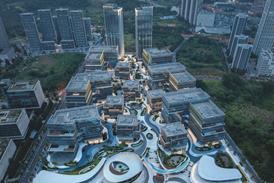Uncertainty reigns which puts innovative and confident designers in a strong position, argues Martyn Evans

Trying to understand how recovery from the pandemic will play out across our property industry is a fast-moving sport right now. Offices? Will anyone ever want to go to one again or will we be back at pre-pandemic occupation levels before the summer is out? What will happen to house prices when the stamp duty holiday is over and all those who stampeded out of London start heading back up the M3, realising that ‘back to normal’ in their market town is not quite what they expected?
Honestly, no one has the answer to any of the big questions yet, but there are lots of ideas flying around and those with the most to invest (and consequently lose) are up for listening to anyone who can provide some reliable insight right now. In a normal world where architects are frustrated that their developer clients don’t listen enough, now might be the perfect time to show that your expertise can provide some valuable answers.
Planning risk is a big one. In a world that is full of risk and uncertainty, standing up in front of a planning committee and presenting a scheme that is not as watertight as it can be is a huge gamble. Understanding the nuance of political issues around development is tough enough at the best of times.
In a post-pandemic world where the future of town centre retail could go either way and house-buyers are feeling very different about what they want from their new home, developer clients are hungry for new ideas to inspire planners. Hungry mouths need feeding, so now is the perfect time to unpack all those great ideas that might before have been waved away as unnecessary, expensive or surplus to requirements. Be brave and confident in your presentations. It will pay off.
Those three letters, ESG, are everywhere. The E for environmental sustainability will become ever more important and the knowledge that architects bring in this regard to their clients, ever more in demand. But it is the S and the G where the call for innovation in our post-pandemic world will grow and architects are perfectly placed to answer it. Great architecture – masterplanning, landscape and building design – has the capacity to deliver enormous social impact, community sustainability, diversity and inclusion.
The market for commercial office space is the sector that will probably change most in the coming year. As we wait to hear government advice about a return to office working, we developers are focused on the kind of office space we need to deliver. The answer is whatever our client occupiers want. When they are spending all their time working out how to keep their workforces happy, connected, healthy and fulfilled as they return to some kind of hybrid home/office working, their minds are turning to the design of their workplaces. The new developments that succeed will be those that are designed to be flexible, people-centred, green and focused on staff wellbeing.
Understanding what this means in terms of building design has to come from those who… design. So, don’t wait for a brief, research like hell, design for solutions and knock the socks off your client with an understanding of how to respond. They will thank you for it.
I have argued many times on these pages for the value great design can contribute to a development project and the capacity for architects to really understand how people want to live – much more so than many of their clients.
In normal times, I know how hard this can be to communicate to developer clients whose decisions are often dominated by the risk attendant on a spreadsheet analysis. But now, the world is a very different place and uncertainty brings nothing but increased risk. A developer’s instinct to recognise risk and turn to the nearest source for a solution, however, puts architects right in the perfect sightline. Those who recognise this and are there with the answers are those who will win.
Postscript
Martyn Evans is creative director of U&I
















No comments yet